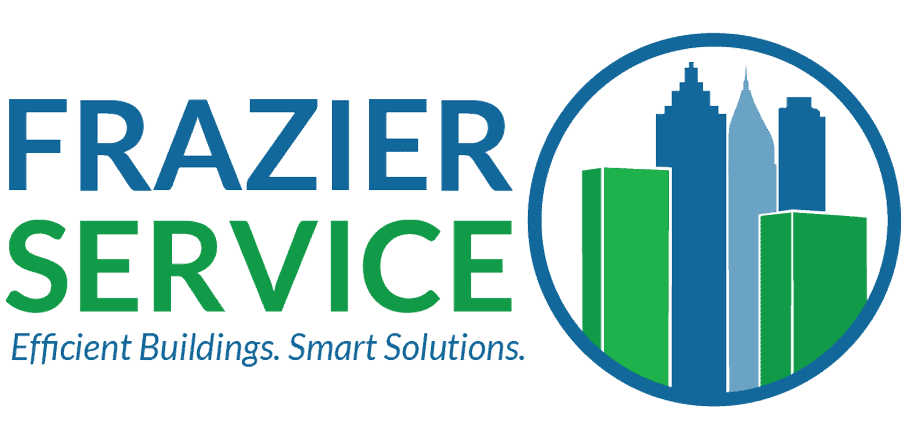Indoor air quality (IAQ) impacts the comfort, well-being, and productivity of your building’s occupants. Indoor environments that lack proper ventilation can increase the chance of health problems. Contamination like pet dander, bacteria, pollen, and emissions from office equipment contribute to indoor air pollution. Many factors impact office building indoor air quality, but improvement is possible.
Want to build a clean and safe environment for your employees and customers? Keep reading to learn how to improve indoor air quality for your building occupants.
Why You Should Care About Indoor Air Quality (IAQ)
Americans spend around 90% of their time indoors. With so much of our lives unfolding inside of office buildings, industrial environments, and at home, it’s essential that we have proper ventilation. Unfortunately, clean air is hard to come by. According to studies conducted by the U.S. Environmental Protection Agency (EPA), indoor environments sometimes have higher levels of pollutants than outdoors.
Pollutants increase the risk of health problems. These health risks include short-term dizziness, headaches, and irritation of the eyes and nose. In most cases, reducing or eliminating the person’s exposure to unclean air is enough to treat the illness. In other circumstances, exposure to indoor air pollution can worsen the symptoms of conditions like asthma or lead to new long-term health problems like respiratory disease and even cancer.
Indoor air quality isn’t an easy fix like a leaky faucet. Air quality is constantly changing and affected by many factors. Humidity, moisture, sources of pollutants, and maintenance of your building’s HVAC system all contribute to clean air.
To improve indoor air quality, you need to isolate pollutants from building occupants, ventilate the poor air, and finally clean the air entirely. That sounds like a lot, but improving air quality in your facility is easier than you think with the right tools and resources.
How HVAC System Maintenance Can Improve Office Building Indoor Air Quality
The best way to achieve and maintain good indoor air quality is to evaluate your building’s HVAC system and layout. An HVAC system includes all of the equipment you use to heat, cool, and ventilate your facility. An effective HVAC solution impacts how well you can remove pollutants. If you have a poor system in place, your HVAC may actively contribute to indoor air pollution.
Ventilation air filters can become polluted with dirt and moisture, affecting your building’s indoor air quality. To keep your office building or industrial facility in good health, assess the following:
- Outdoor air supply – A steady outdoor air supply can dilute the pollutants released by people, products, office equipment, and building materials. HVAC systems bring in outside air, so upkeep is essential.
- Outdoor air quality – Pollen, dust, and carbon monoxide all contribute to indoor air pollution. When these contaminants are at a high volume, it becomes more difficult to clean the air thoroughly. Specialized filtration equipment can trap air particles, including chemical pollutants.
- HVAC maintenance – Routine preventative maintenance is essential to the upkeep of your equipment. With a properly functioning HVAC system, you ensure clean air and its effective delivery.
- Space planning – The placement of equipment like a computer can adversely affect your HVAC system’s ability to deliver clean air to building occupants. Setting a heat-generating device near a monitoring device like a thermostat could interfere with your HVAC system. In this case, the system will deliver too much cool air into the room because the thermostat thinks the room is hotter than it is.
Other Cost-Effective Ways To Enhance Industrial Indoor Air Quality
Commercial HVAC equipment isn’t the only way to improve indoor air quality for your office building or industrial space. Natural ventilation can cost-effectively moderate indoor air temperature and let in outside air. This kind of ventilation improves indoor air quality by reducing indoor air pollutants.
Common forms of natural ventilation include:
- Opening windows and doors
- Closing or raising blinds
In addition to ventilation, you can improve your indoor environment by paying attention to everyday activities like heating food or using the office printer. When working in your building, be sure to do the following:
- Avoid blocking air vents or grilles
- Clean up all water spills to prevent the growth of fungi and molds
- Quickly dispose of garbage to avoid contamination and odors
- Store food properly
- Use cleaning products to sanitize kitchens and dining areas
Frazier Service Company Can Help You Improve Indoor Air Quality
Are you ready to stamp out indoor air pollution? Frazier Service Company’s commercial HVAC system services include preventative maintenance, emergency repairs, and high-quality installation. Industry-leading partners build our equipment, and our team of technicians, engineers, and support staff customize plans to suit your unique specifications.
With proper HVAC equipment and routine maintenance, indoor air pollutants won’t stand a chance. Clean ductwork and specialized filters keep you on the cutting edge of ventilation solutions. Reach out today if you’re ready to breathe easier.





